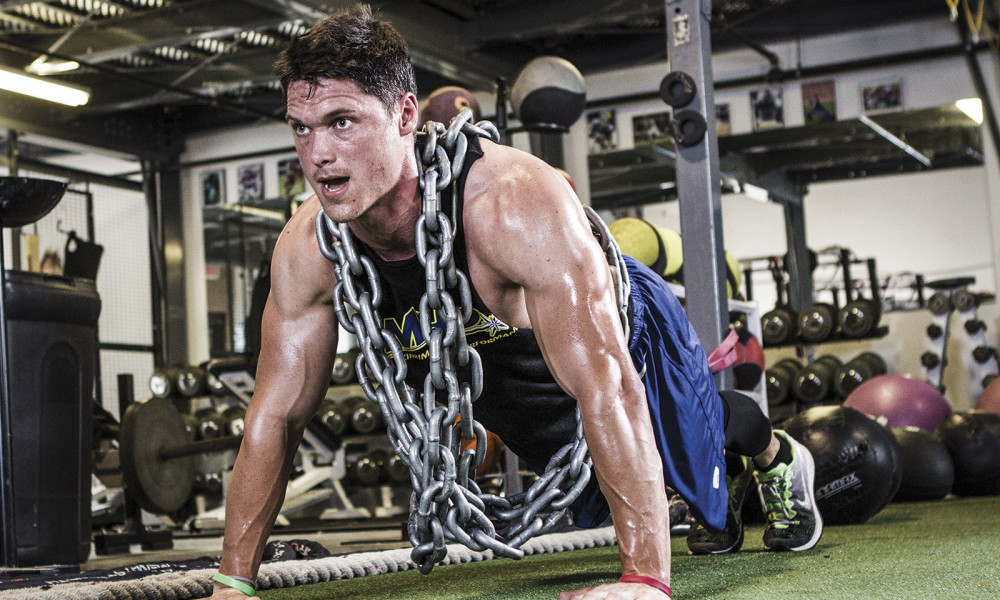

If you’re an advanced athlete, someone who hits the gym leisurely, or find yourself somewhere between those two ends of the spectrum, push-ups need to be in your program. There is simply no doubt about their effectiveness. Bodyweight training seems to have taken a backseat recently since a wide and interesting variety of free weights (kettlebells, barbells, Indian clubs, sleds) are so widely available. Unfortunately, people look at push-ups and think they are just too basic.
Traditional push-ups are just the beginning variation of hundreds of different push-up styles. If you are serious about making gains and getting stronger, take some time to incorporate push-ups into your program. Go on YouTube and take a look at some of the calisthenic videos being posted, and see the complex and sophisticated ways some of those guys take their training. Then look at the body that goes along with it and try to make the argument that bodyweight training and push-ups don’t create gains.
Bodyweight training takes a load off your joints that get beat up over time, especially if you lift weights frequently. If you are constantly loading up your muscles and joints with heavy weights, then after a while you will feel the pain. Push-ups and other forms of bodyweight training also allow you to take your joints to its full range of motion. This is paramount for maximizing muscle hypertrophy and strength.
Push-ups mainly target your core, shoulders, chest, and triceps, but every part of your body can be affected. If you have any strength leakage in one of those key movers, your push-up will suffer from it. Some people can’t even perform a strict push-up and then blame it on their chest or arms being weak. Granted this may be true, but I’ve seen people increase their push-up strength simply by making their core stronger. Push-ups aren’t just one body part or muscle controlling the movement, but in fact it’s a team of muscles working together to move your body up and down.
The knock on traditional push-ups is that they become too easy over time. I agree that the basic training principle of progressive overloading is key to adding size and strength to your physique. By using these following push-up variations, you can keep your body from adapting and continue to make progress while reaping the muscular and joint benefits of the classic push-up.
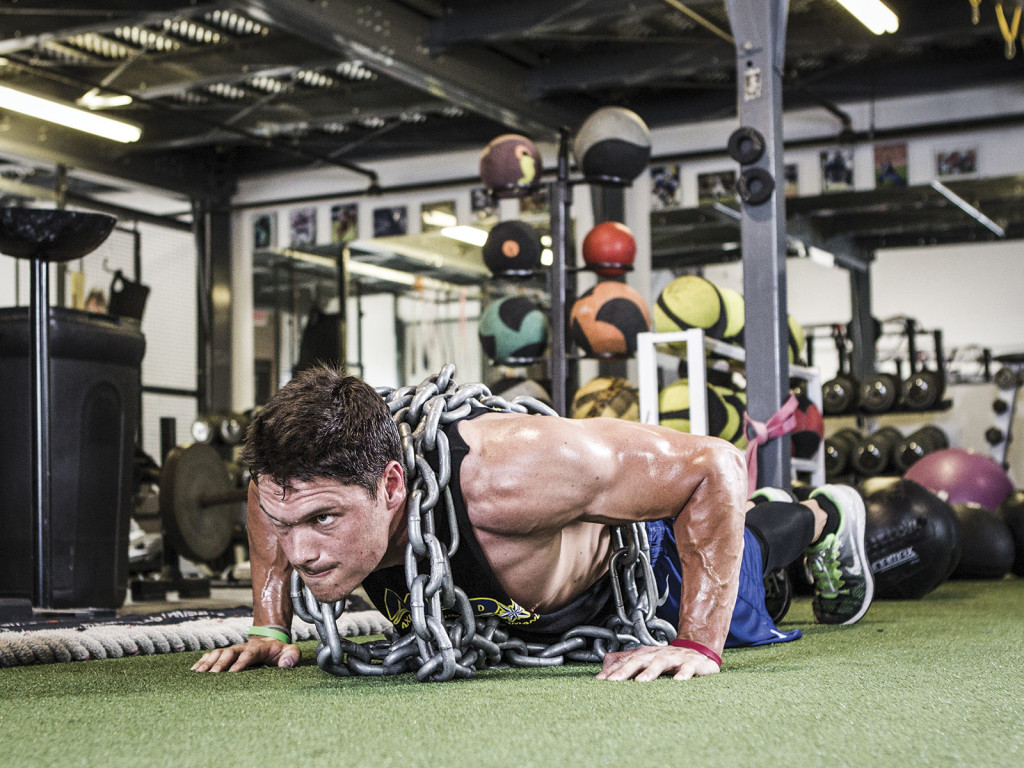
Chain Push-Ups
If you get bored of traditional push-ups, then try incorporating some external resistance. Adding chains to your back or neck can increase the difficulty of the push-up. One great aspect of adding chains is that they allow the movement to get harder as you come higher off the floor and your arms extend. As you go down, the chain hits the floor and unravels, causing the weight to deload. As you begin to come up, the chain loads back up making the push-up harder as you rise. This is great for not only building rock-hard pecs but also great for attacking your triceps. Triceps take over much of the load as you begin to lock out your push-up (or bench press), so chains are great for targeting your triceps when doing push-ups.
I personally love to load up my back with a few chains and then perform a set number of push-ups, such as 10 reps. After you hit that number, take a chain off and then perform 10 more reps. Keep doing this, and when you have no more chains on your back, perform as many push-ups as you can until failure. You may only be able to do three sets of these.
Sets and Reps: Five to 10 sets of 15 to 25 reps
Feet Elevated Push-Ups
Another intriguing way to make your push-ups more difficult is by elevating your feet. By doing this, you mimic an incline bench press, placing more emphasis on the upper portion of your chest and shoulders. Be careful, because the more your feet are elevated the harder it becomes because you begin using your shoulders more. If you’re trying to target your shoulders, then this is fine, but if you’re trying to stay on your chest, then don’t elevate your feet too much. If you want to make this harder, add resistance such as a weighted vest. I usually don’t recommend chains for beginners since they can easily slide off the neck. But if you are an advanced lifter and have strong cervical extensor muscles, then feel free to use chains on elevated push-ups.
Sets and Reps: Five to 10 sets of 12 to 20 reps
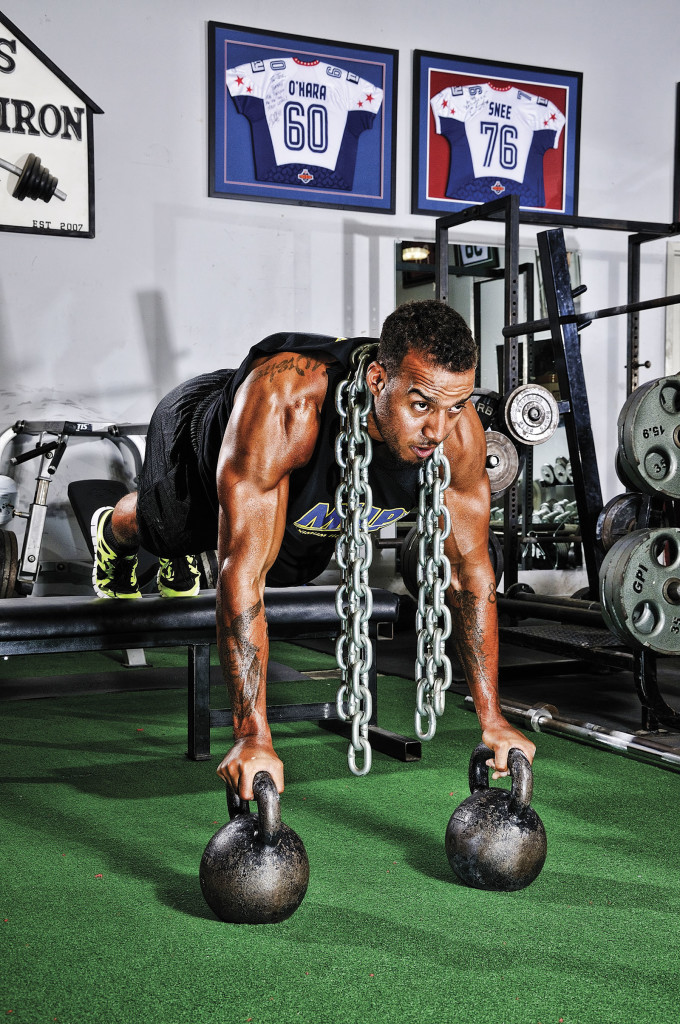
Plyometric Push-Ups
One fun and advantageous way of challenging yourself is by adding clapping push-ups to your programming. Simply drop down like you would a regular push-up but explosively drive yourself up, allowing your hands to come off the floor.
If you know much about jumps and plyometrics with your legs, then the same rules apply when doing clapping push-ups. The higher you get the more explosive you will prove to be. However, make sure you have the strength to come down and under control. If you can drive off the floor but can’t control your descent, then you will wind up hurting yourself. With that being said, most people who can do a clapping push-up have the strength to absorb their weight when their hands return to the floor.
These can be made harder by doing two claps instead of one or by clapping over your head or behind your body. The ways to make this exercise more difficult are endless. One of my personal favorites is lowering your body down, pausing at the bottom for two seconds, and then explosively driving yourself up to perform a clapping push-up. This mimics doing a standing vertical jump versus a seated vertical jump. Standing vertical jumps take advantage of your natural stretch reflex as opposed to seated vertical jumps that take your stretch reflex away. The same principles apply when performing clapping push-ups.
A great way of improving upper-body power is by performing a clapping push-up immediately after performing a heavy set of bench press. When you perform heavy sets on the bench press, your neuromuscular system is heightened, resulting in excited muscle fibers. By immediately performing a clapping push-up, you can take advantage of this heightened state and get more
out of it.
Sets and Reps: Five sets of 10 to 20 reps IM







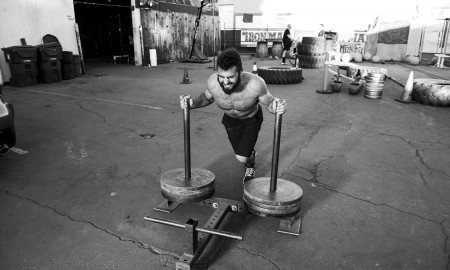











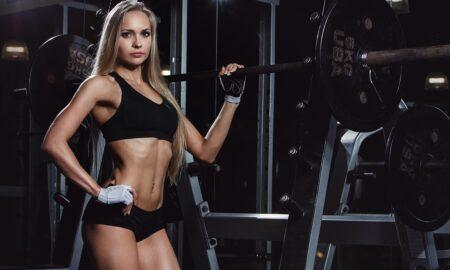


You must be logged in to post a comment Login